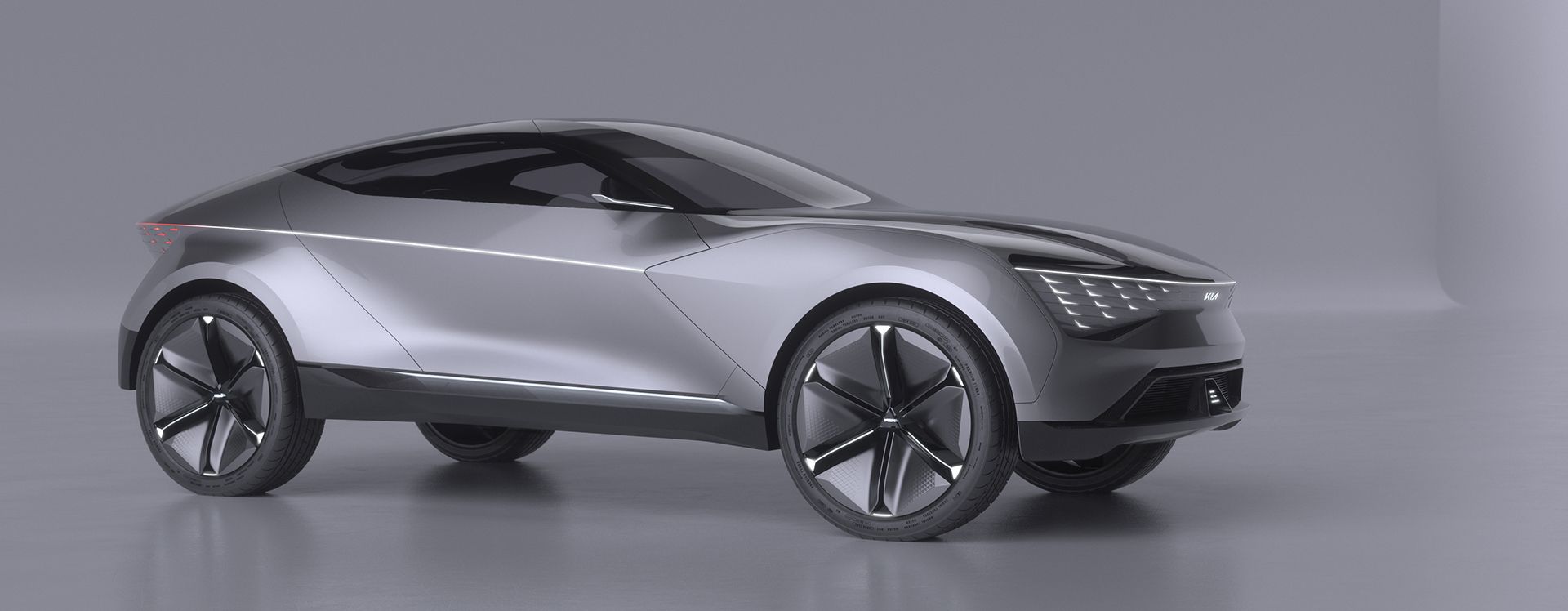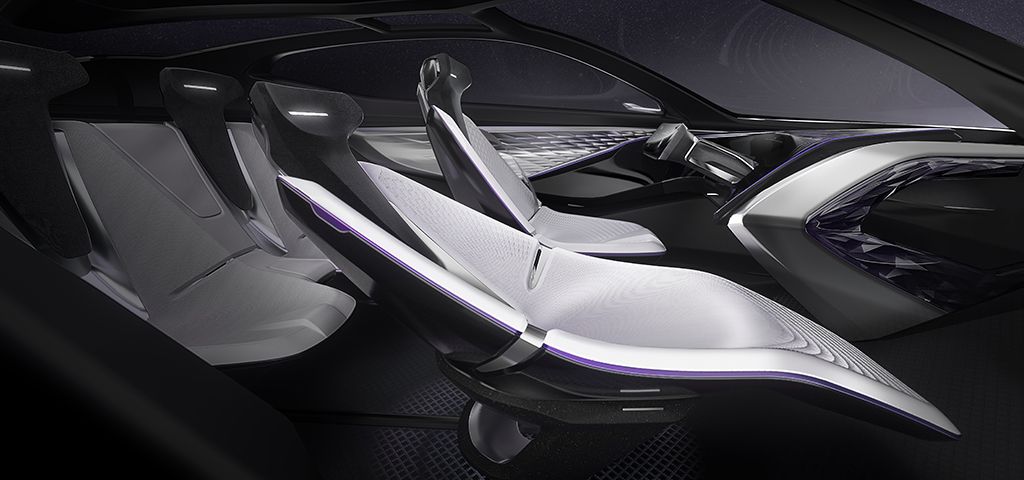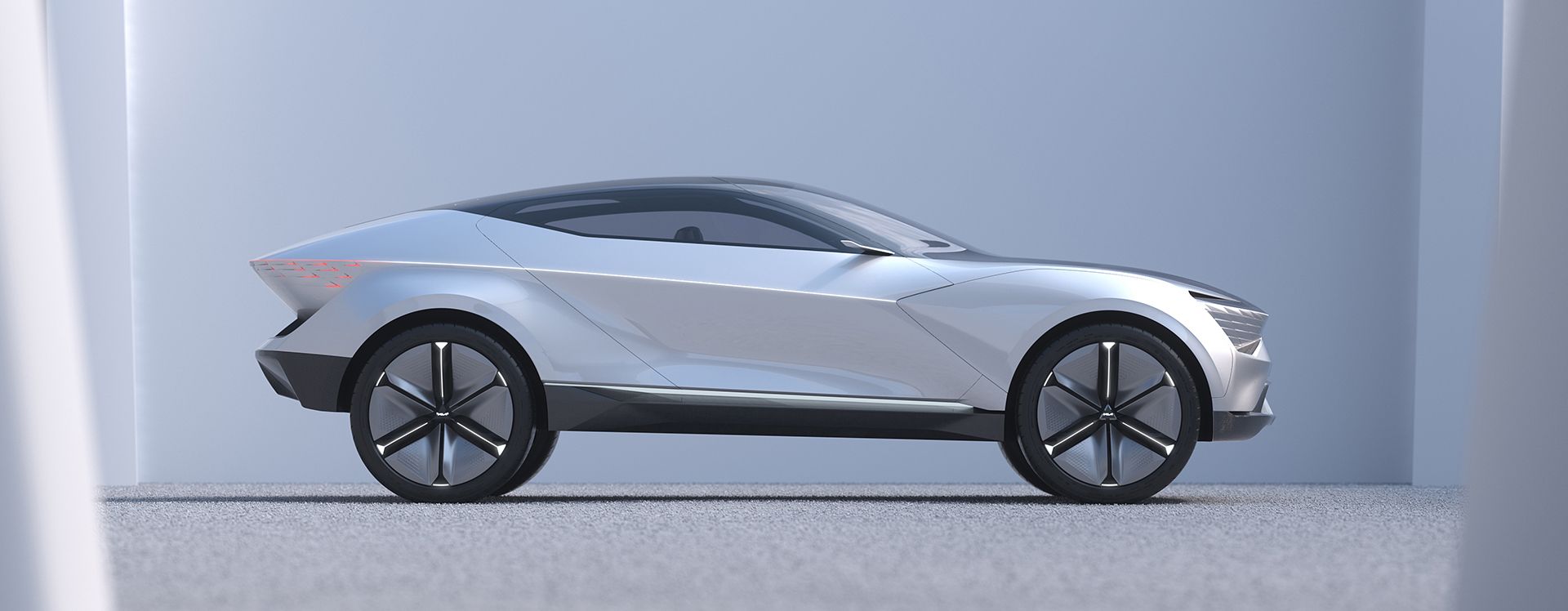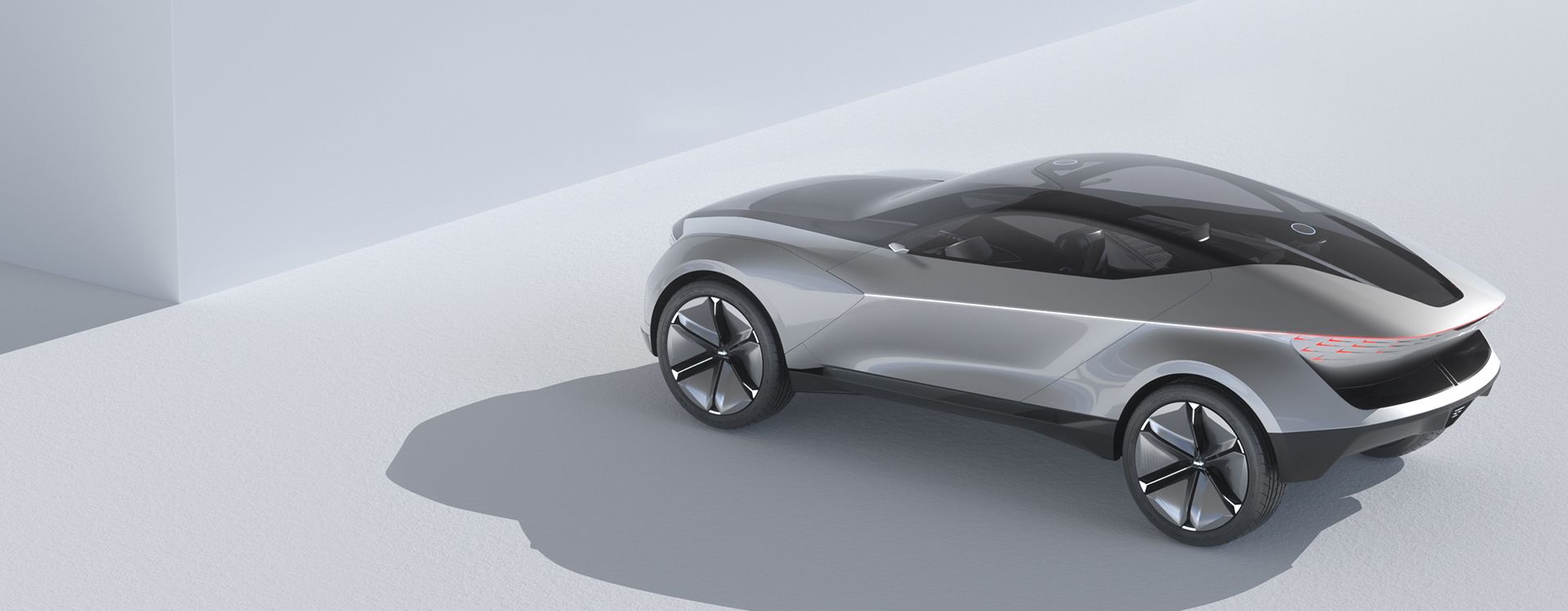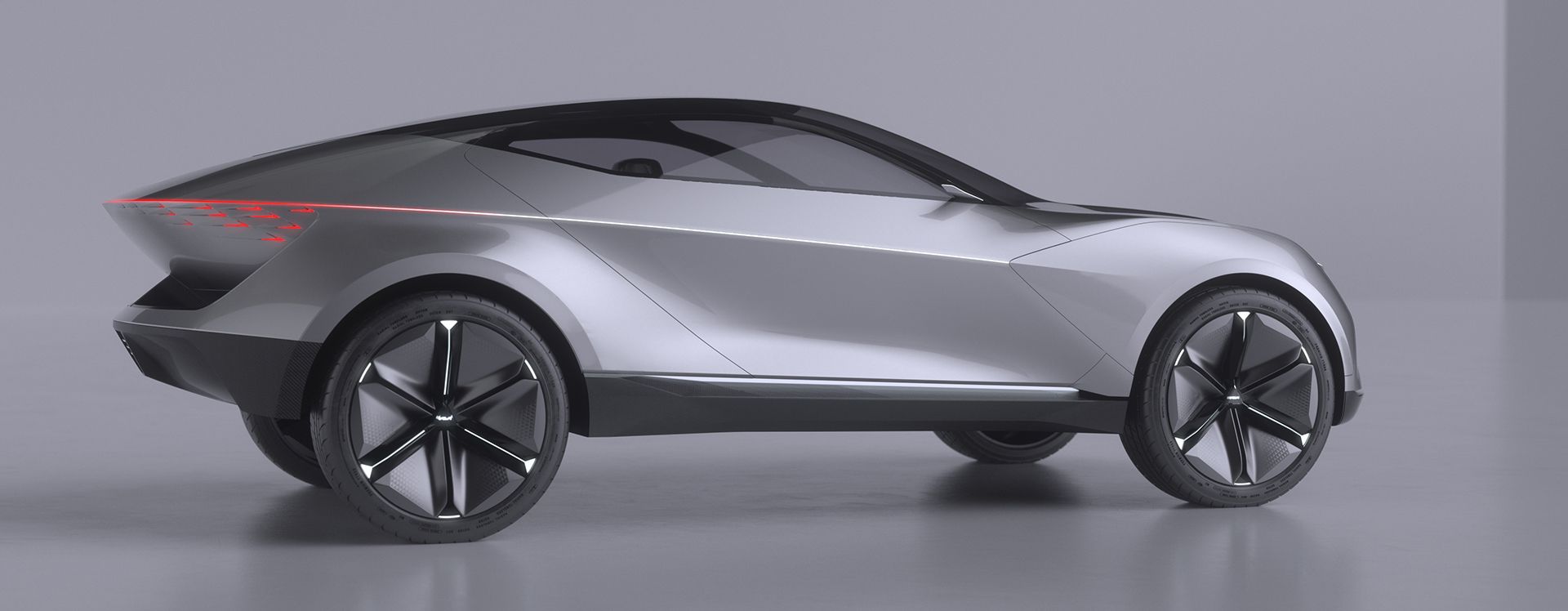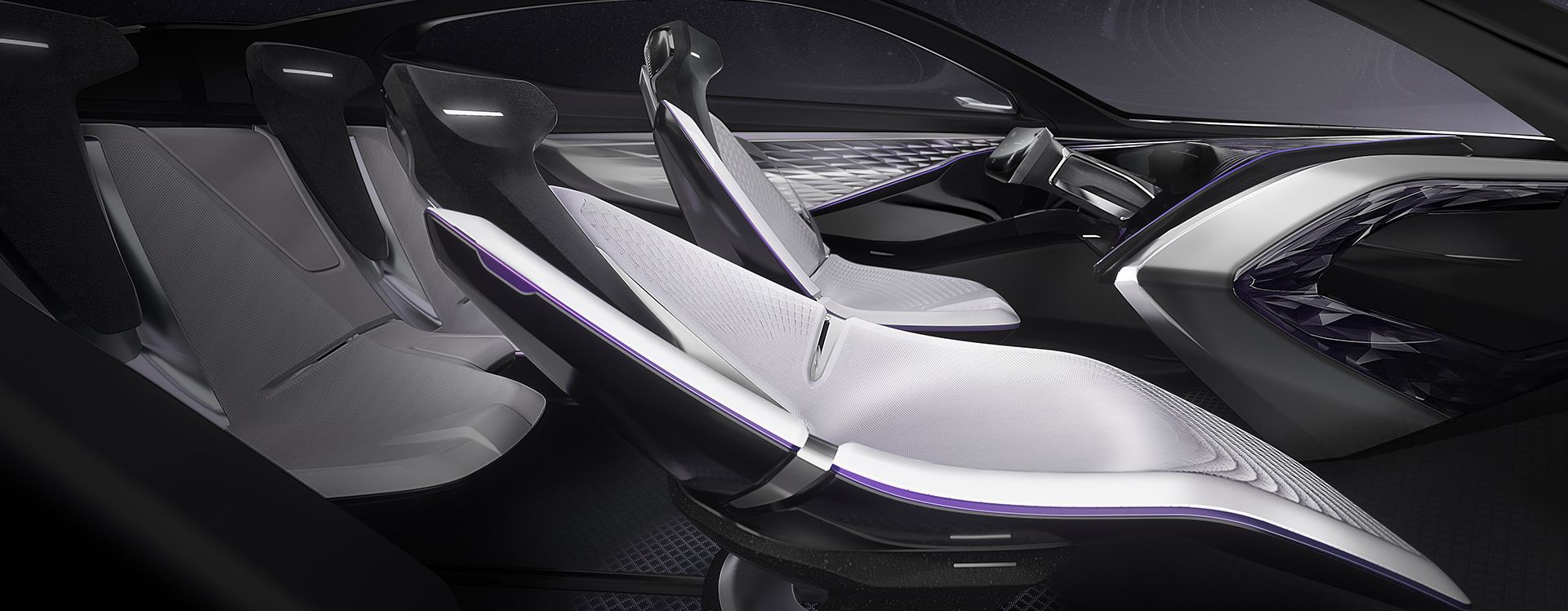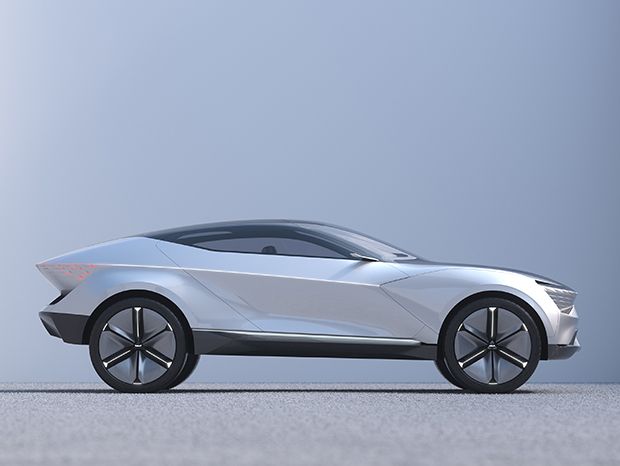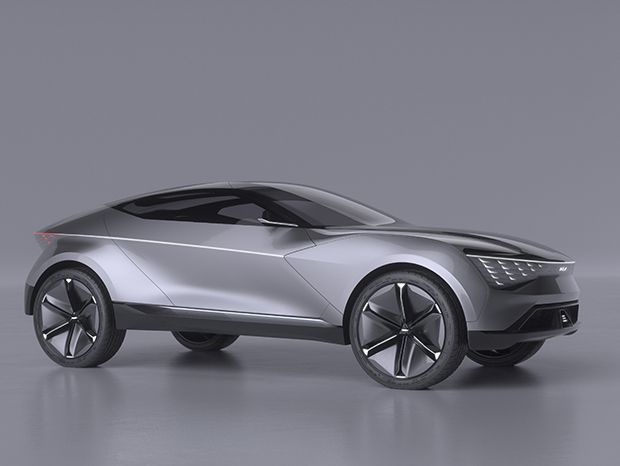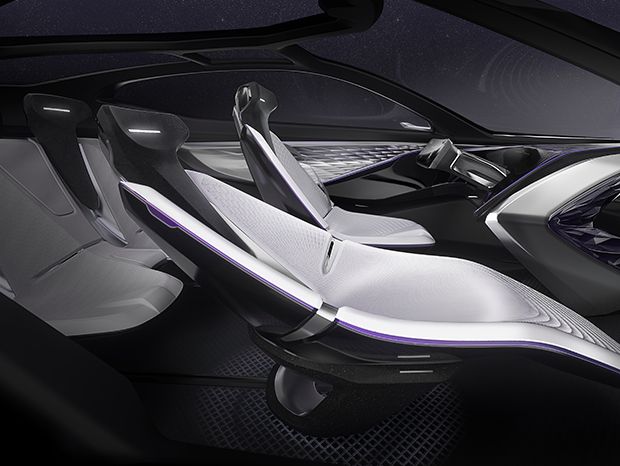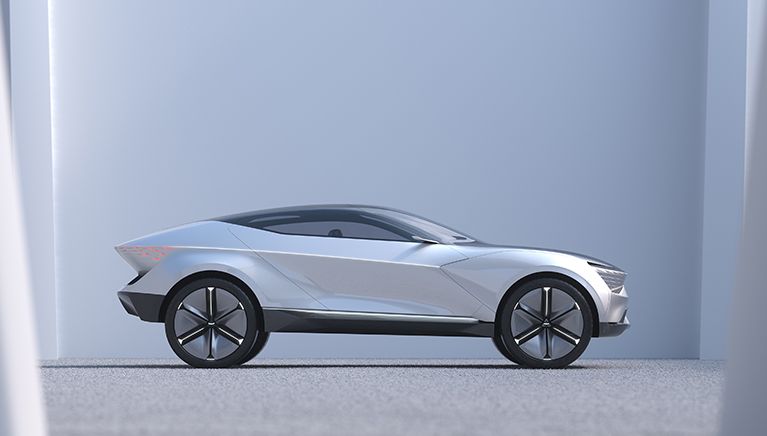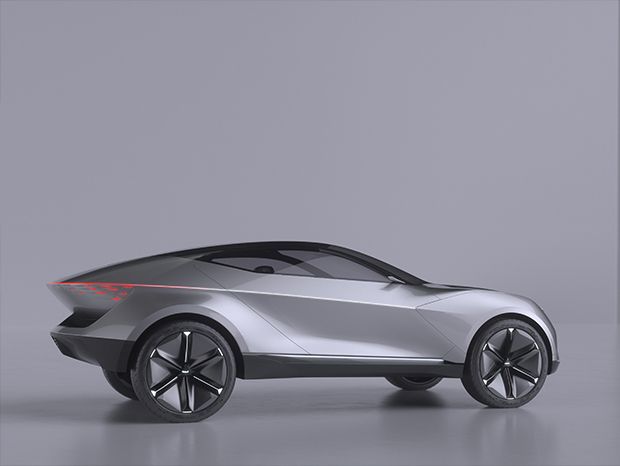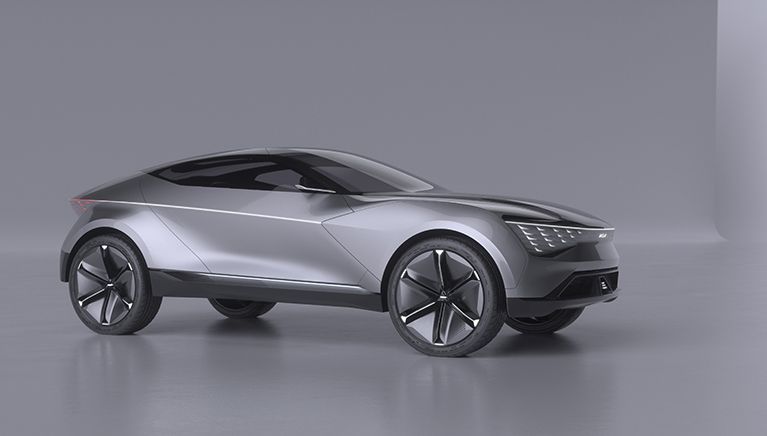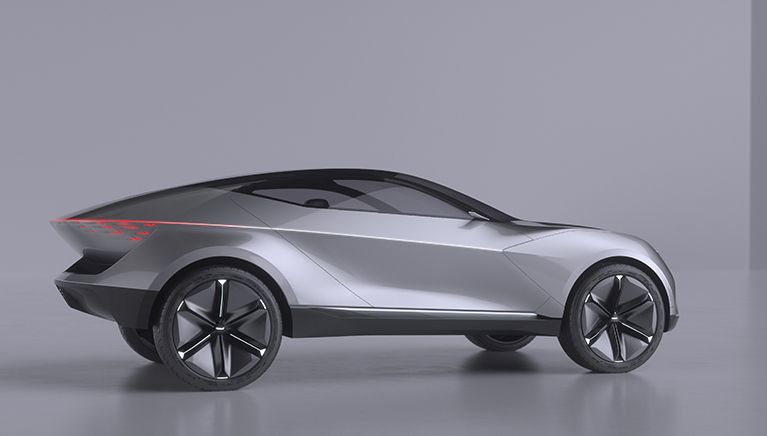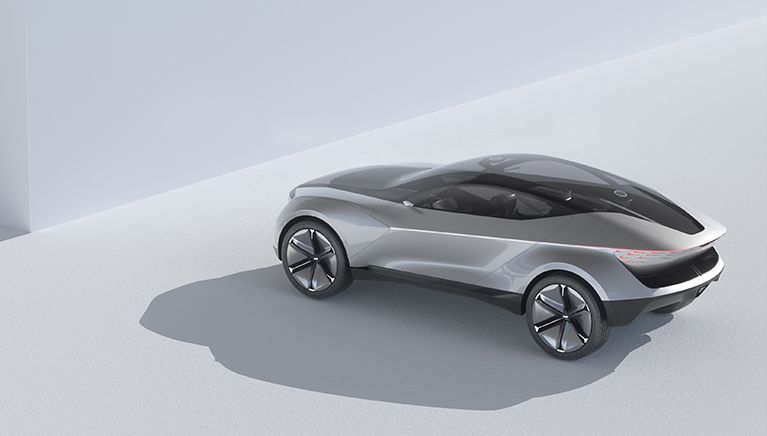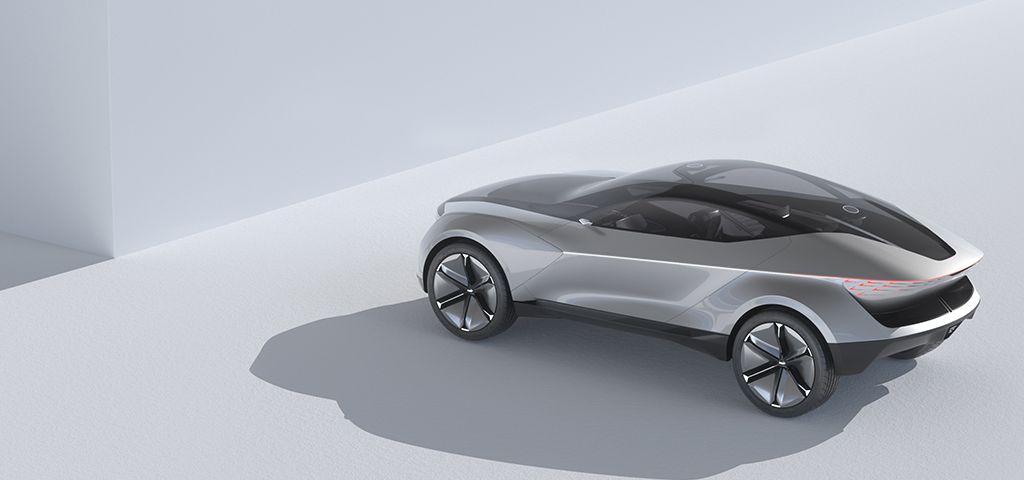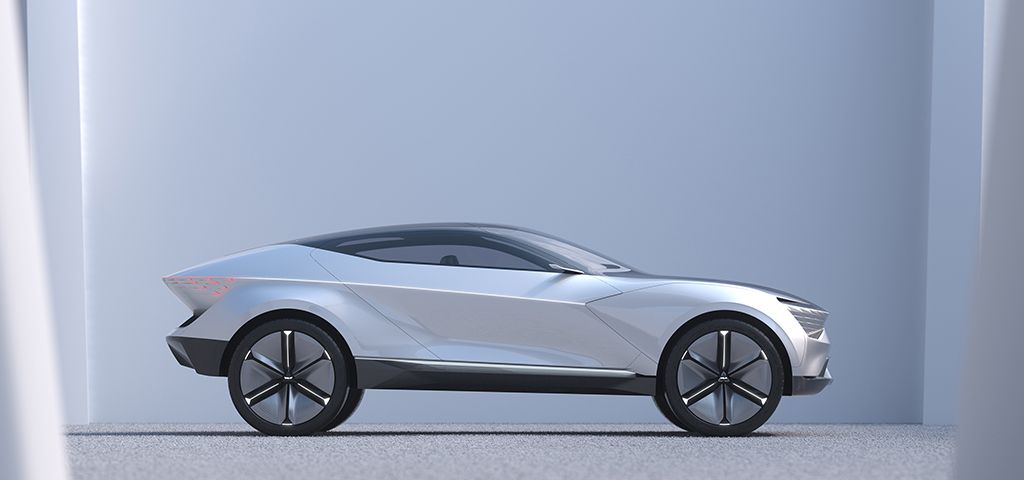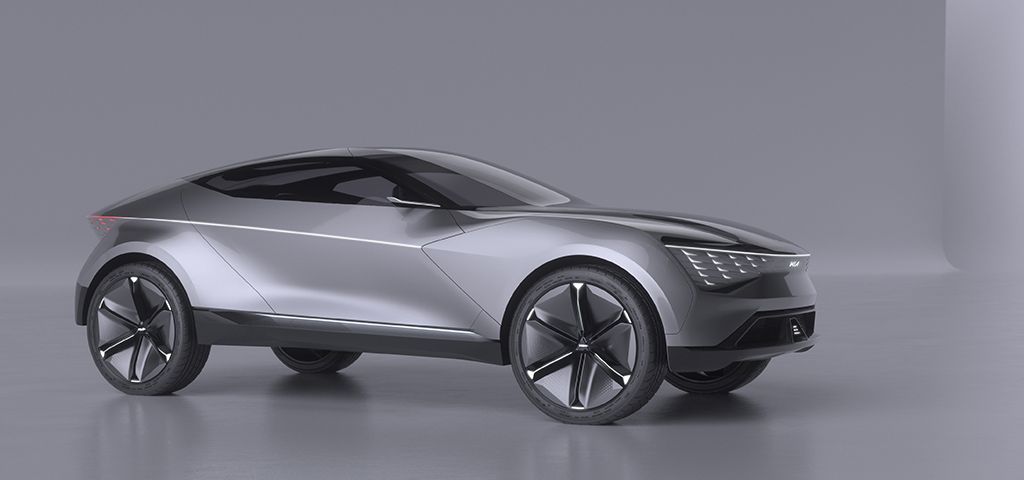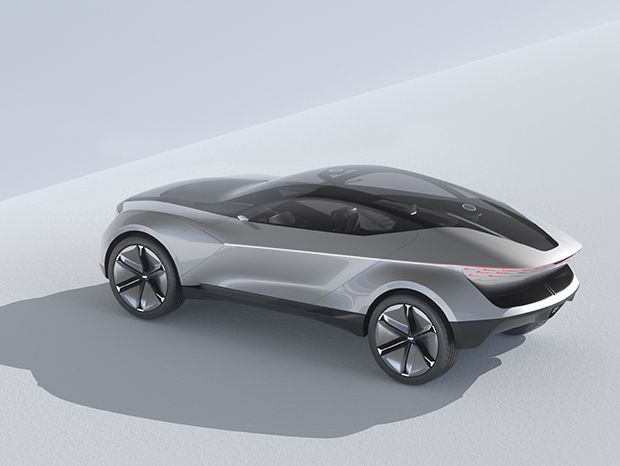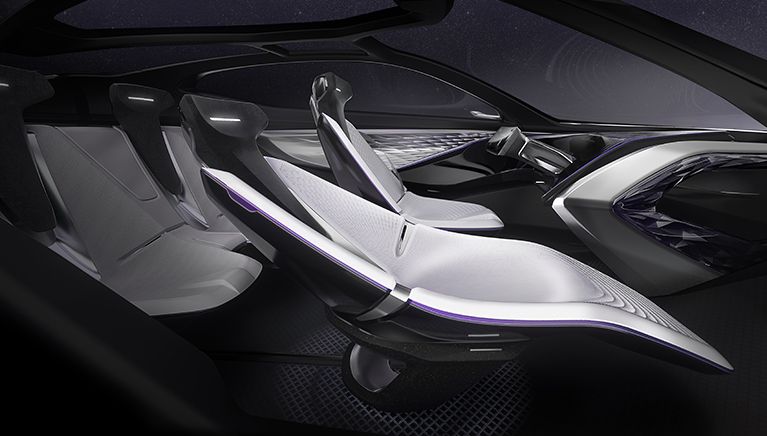Kia glided through the design process of its latest coupe SUV concept, the Futuron, drawing inspiration from outer space. With Level 4 autonomy, this SUV with a "360-degree core" represents a look at the future of Kia design with its novel approach to the tiger nose front grille and the eye-catching Star Cloud headlights and taillights. In fact, the concept features light sources all over the luscious bodywork that suggests this EV's got some grunt. Expect to see at least some cues inside and out on future models of the Korean automaker.
South Korea has quickly risen, in the span of about two decades, from the doldrums of the auto industry to the very top and concepts such as Kia's Futuron (in itself a pun on the words "future" and "on") signals to the world that Kia plans to stay at the top in the foreseeable future by incorporating the latest EV technology coupled with autonomous systems, all draped in a futuristic body with clean surfaces but also aggressive ridges and angles. We like it if it's a sign that the two-door SUV is bound to make a comeback.
2019 Kia Futuron Concept
- Make: Array
- Model: 2019 Kia Futuron Concept
- [do not use] Vehicle Model: Array
Kia Futuron Concept Exterior
This is no accident, as Kia explains. It's all got to do with where the car was unveiled - in China. More precisely, the surfacing around the headlights - known as the 'Star Cloud', although this nomenclature is also used for the similarly-organized taillights - is meant to echo the scaled armor that adorns Chinese dragons. This is, in Kia's PR discourse, the 'Dragon Skin.' Looking back, the Imagine by Kia Concept also featured an interesting lighting arrangement in the front with small LEDs placed within small 'pockets' in the lower bumper.
While there are some bold surfaces around the front end, the general appearance of the car is quite clean. For instance, the whole 'tiger-nose' area actually caves in comparison to the lower bumper and the edge of the hood, thus underlining the narrower area of the grille on standard production Kias. The creases that exist are bold and can be seen from a mile away - they're there to make a statement, not merely exist for the sake of existing.
The top edge of the flared fenders, that barely contain those huge wheels, falls back and blends with the doors.
The middle section of what would be the hood area in a front-engined car is dark-colored, continuing the theme started around the area of the 'monobrow' above the headlights.
Sure, the huge wheels don't help in the car's bid to look as sleek as possible, but you must admit Kia's done an admirable job of getting rid of almost all annoying ridges and useless multi-faced surfacing. The sides of the Futuron are flowing, almost voluptuous, including the bodywork above the waistline that begins to wrap around the greenhouse towards the back, creating a de facto B-pillar in the process. It's all very subtle, but the basic features of a car are still there.
The Kia letters are placed in the middle with yet another LED light cluster in the lower bumper, above the black areas around the underbelly of the car, a continuation of the black chin spoiler in the front and the black rocker panels. The roof or, rather, the greenhouse, is, seemingly, one continuous sheet of glass.
The Korean automaker actually said that
What's really cool is that the light peeks from between the body panels apparently to gestures and movements you make facing the car, but it's not clear what they actually do when you, for instance, clap at the car or, why not, wave at it. Do they blink? Do they just flicker? Do they turn off? Do they become increasingly brighter as you draw near to welcome you? It's unclear and Kia's only saying that it "elicits a close connection between vehicle and driver."
The Futuron is actually a pretty big car, its sporty good looks belying a length that exceeds that of the Kia Sorento SUV and the Kia Stinger, being about as long as the Optima. At almost 191 inches, the Futuron is almost 20 inches longer than the Kia e-Niro, currently Kia's only crossover SUV (the e-Soul is, frankly, more of a 'car' than an 'SUV').
Kia Futuron Concept exterior dimensions
|
Length |
190.94 inches |
|---|---|
|
Height |
61.02 inches |
|
Wheelbase |
118.11 inches |
Kia Futuron Concept Interior
The interior premises of the Futuron are at least as forward-thinking as the exterior.
The ambient lighting system is as interactive as you'd expect and the 'Dragon Skin' also hides air vents for the A/C system. The driver's and the passenger's seats are made out of flexible materials and can offer an upright ‘driving’ position, or a reclined ‘rest’ position, depending on whether or not you want to take matters into your very own two hands and drive the Futuron.
In the back, there's sitting for two more adults with some storage spaces in the back. We can see in the pictures provided by the Korean automaker at least two covered storage areas behind the rear seats.
Kia Futuron Concept Drivetrain
Details about the drivetrain are, by and large, inexistent at this stage. We know that the battery is strong enough to make the Futuron feel sporty, aided by no less than four electric motors, one behind each wheel, but that's about it.
We think this veil of secrecy has something to do with the fact that a new EV platform co-developed by Kia and Hyundai will debut next year. The two automakers are spending a lot of money (over $38 billion in long-term investments in R&D and capital expenditure, some of it going to EVs and autonomous tech) in the bid to sell as much as 1.67 million electrified cars by 2025.
Currently, Kia's only SUV/crossover offering is the compact Niro EV (or e-Niro, however, you like it) that's only plagued by its ludicrous waiting time stretching in some places to a year. But it's easy to see why. With a 64-kWh battery, the Niro romps away thanks to an output of 200 horsepower that translates to a 0-60 mph sprint in 7.5 seconds. The EPA-estimated range is in the region of 239 miles. Moreover, it starts at just $38,500 but the Niro EV EX Premium is about $45,000. Still, that's nothing compared to other compact electric SUVs. Granted, most of them are luxurious, such as Audi's $75,000 e-tron but not everyone is after luxury.
We think a production version of the Futuron or, in any case, a coupe-styled crossover SUV should benefit from added power - at least 350-400 horsepower - and a bigger battery for +250-mile journeys on one charge. Extra power should also allow it to accelerate faster as that e-tron needs a little over five seconds to reach 60 mph, for instance. But, depending on what the new platform will bring, we think such sporty aspirations aren't out of touch for Kia.
Kia Niro EV specifications
|
Electric Motor |
|
|---|---|
|
Motor Type |
Permanent Magnet Synchronous Motor |
|
Voltage |
356V |
|
Horsepower |
201 hp / 3,800-8,000 rpm (150 kW / 3,800-8,000 rpm) |
|
Torque |
291 lb.-ft. / 0-3,600 rpm (395 N*m / 0-3,600 rpm) |
|
Electrical System |
|
|
High-Voltage Battery Pack |
- |
|
Battery Type |
Lithium Ion Polymer Battery (LIPO) |
|
Battery Voltage (V) |
356V |
|
Battery Capacity (Ah) |
180 Ah |
|
Battery Energy (kWh) |
64 kWh |
|
Battery Power (kW) |
170 kW |
|
Battery Weight (lbs.) |
1,008 lbs. |
|
Drivetrain |
|
|
Transmission Type |
Gear Reduction Unit |
|
Final Gear Ratio (Constant) |
8.206:1 |
|
Dynamic Performance |
|
|
Max. Speed (mph) |
103.8 mph |
|
Acceleration Performance (sec) |
- |
|
0 - 62.1 mph |
7.8 |
|
49.7 - 74.6 mph |
5.0 |
|
Brake Performance (ft.) |
- |
|
62.1 - 0 mph |
137 ft. |
|
Charging |
|
|
On-board charger (OBC) |
7.2 kW |
|
Port locations |
Behind front grille |
|
Charging time |
- |
|
Level 1, AC charge with in Cable Control Box (ICCB) |
59 hours (120V) |
|
Level 2, AC charge with Electric Vehicle Supply Equipment (EVSE) |
9 Hours 35 Min (7.2 kW) |
|
DC fast charge with Electric Vehicle Supply Equipment (EVSE) to 80% charge |
75 Min (50 kW)1 Hour (100 kW) |
Final Thoughts
The Kia Futuron is a step in the right direction for Kia as it stamps its intentions for the future. Electrified Kias of the 2030s will not be boring and they'll surely not be sluggish if the spirit of the Futuron will live on to inspire them. This is surely a striking concept and the fact that Kia unveiled it in China is a sign that the Koreans hope the Chinese EV/Crossover/SUV/Hybrid craze won't tank although reports are grim.
Will a reality of more negligible to non-existent incentives affect the market share of EVs in the war they've waged against ICE-powered cars? "On November 11, the China Association of Automobile Manufacturers announced sales of electric, hybrid, and fuel cell cars plunged by over 45% in October, marking four straight months of declines in the sector," CleanTechnica wrote. Can cars like the Futuron turn the tide around and battle with the image EVs have in some markets now, that of "some form of government welfare being handed out,” as Tu Le, founder of Sino Auto Insights, a consulting firm based in Beijing put it. Only time will tell...

